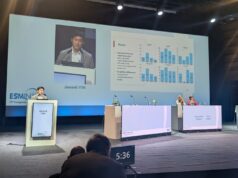In a recently published systematic review and meta-analysis, the use of protocol-based general anaesthesia (GA) in acute ischaemic stroke patients undergoing thrombectomy was significantly associated with less disability at three-months, compared with procedural sedation. However, the authors, Silvia Schönenberger and colleagues from Heidelberg, Gothenburg and Aarhus, Germany, write that the findings should be interpreted “tentatively”, given that the individual trials were single-centre trials, and disability was the primary outcome in only one trial. The paper has been published in the Journal of the American Medical Association (JAMA).
According to the authors, the rationale behind this investigation was driven by the previous association between GA during thrombectomy and poor neurological outcome in non-randomised studies. “Because mechanical thrombectomy has become the mainstay of therapy for patients with acute large vessel occlusion stroke, the need to clarify the optimal anaesthetic strategy is imperative,” they write.
Through aggregating individual patient data from three single-centre trials, Schönenberger and colleagues obtained data from 368 patients (mean age: 71.5, 163 [44.3%] women). The median National Institutes of Health Stroke Scale (NIHSS) score for the cohort was 17 (14–21), while 183 (49.7%) patients received GA and 184 (50.3%) received procedural sedation. A total of 70.5% of the GA group and 71.4% of the procedural sedation group received intravenous thrombolysis with recombinant tissue-type plasminogen activator prior to mechanical thrombectomy.
In terms of functionality at three months—the primary endpoint—the authors reported a mean modified Rankin Scale (mRS) score of 2.8 (95% confidence interval [CI], 2.5–3.1) in the GA group, which was significantly less (p=0.02) than the mean mRS score for the procedural sedation group, at 3.2 (95% CI, 3.0–3.5). Among adverse events, which were prespecified prior to analysis, Schönenberger and colleagues report that only hypotension (p<0.01) and blood pressure variability were significantly more common in the GA group.
Of importance, the authors noted that, “These findings are in contrast with the results of previous retrospective studies that reported worse functional outcome in patients with acute ischaemic stroke who received general anaesthesia compared with those who received procedural sedation.” They add that GA may be associated with a more optimal procedural condition for performing mechanical thrombectomy because of the absence of patient movement.
To initially guide their study selection, the investigators looked into randomised clinical trials of adults with an NIHSS score of at least 10 and anterior circulation acute ischaemic stroke. Then, individual patient data from three single-centre, randomised, parallel-group, open-label treatment trials with blinded endpoint evaluation that met inclusion criteria were analysed, using fixed-effects meta-analysis.
Specifically, these trials were: SIESTA (Sedation versus intubation for endovascular stroke treatment), ANSTROKE (Anaesthesia during stroke) and GOLIATH (General of local anaesthesia in intra-arterial therapy). Of note, the latter recently won the European Society of Minimally Invasive Neurological Therapy (ESMINT) award for best European publication in the Journal of NeuroInterventional Surgery (JNIS).
In support of the current review, the authors also allude to a post hoc analysis of SIESTA that suggested advantages for several technical aspects and a shorter procedure time with GA. Regardless, Schönenberger and colleagues conclude that further research is needed to “identify clinical and radiologic factors that could predict when a primary GA is necessary to reduce the number of emergency conversions from procedural sedation to GA.”
Further, they emphasise—given the likelihood that patient populations and anaesthetic strategies differ from country to country—that a large, multicentre RCT which includes “at least a basic agreement on standards of procedure and physiology parameter targets” is necessary.










